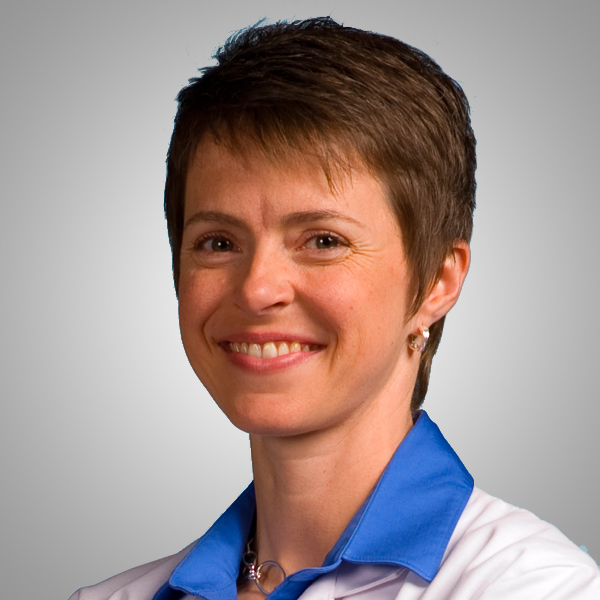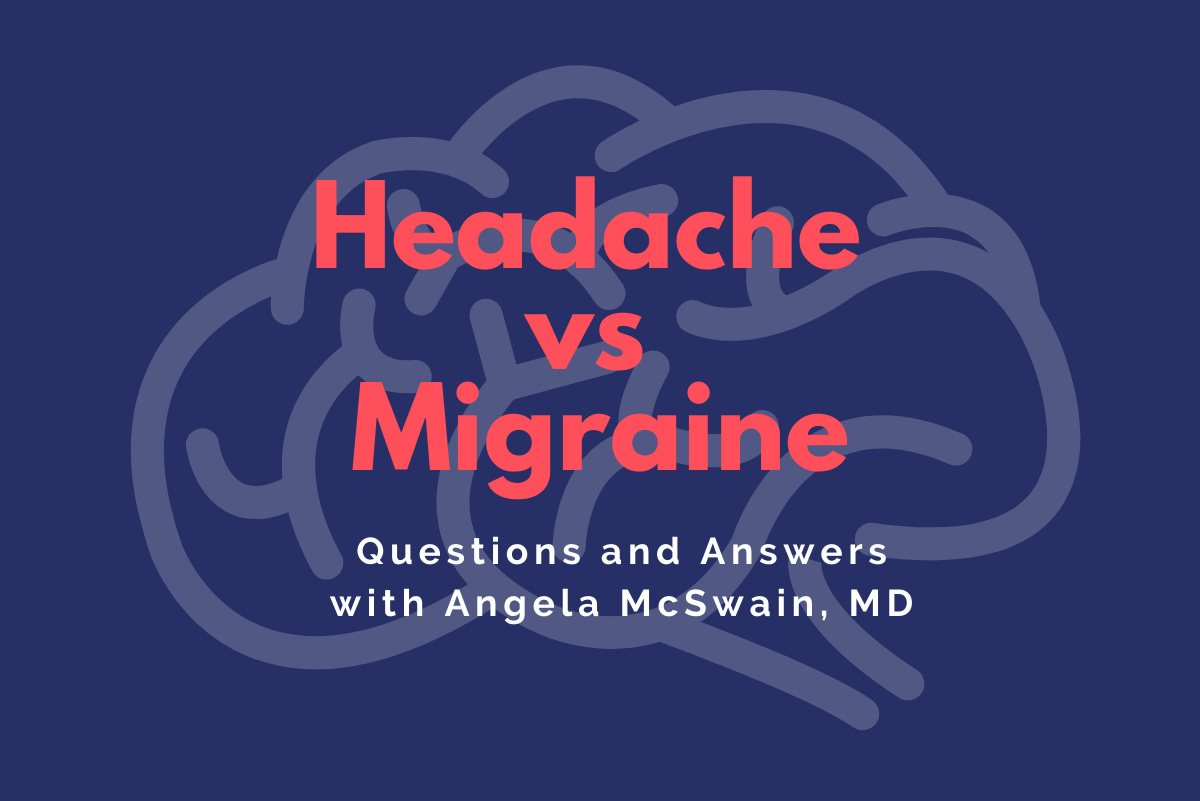Questions and Answers with Angela McSwain, MD of St. Mary’s Neurological Specialists
Many are familiar with the dull ache, sharp tinges and sensitivity that accompany a headache or migraine. They are ubiquitous and annoying, can tax our concentration and alter our mood almost instantaneously. Here Angela McSwain, MD will answer some of those questions you have about headaches and migraines.
How does a medical professional describe a headache?
Dr. McSwain: Nothing fancy to the description really, it's just anything that involves pain located in the head, sometimes with radiation of that pain to nearby structures such as the neck, ears, face or jaw, but typically excluding pain confined just to the face, jaw, or neck.
We typically make a distinction between what are called "primary headache disorders" and "secondary headache disorders." Primary headaches are those which occur without obvious underlying cause. The headache syndrome itself is the disorder. This includes things like migraine, cluster headaches, tension-type headaches and rarer headache disorders. Secondary headaches are those caused by another underlying condition. This can include anything from meningitis (infection of the linings of the brain and spine), to brain tumor, bleeding in the brain, sinus infection, severe elevation of blood pressure, head trauma, elevated intracranial pressure or even just a systemic infection such as the flu.
What are the most common causes for the typical headache?
Dr. McSwain: By "typical" I assume you mean the type of headache your average, otherwise healthy person would get on an episodic but recurrent basis. Probably the most common cause for this is tension-type headache, with the most common cause of more severe headaches being migraine. Other common causes of headache include viral infections, sinus infection or sinus congestion due to environmental allergies, "TMJ" (pain caused by problem in the jaw joint) and headaches due to inadequate or disrupted sleep.
What is some of the latest "cutting edge" research on headache treatment, prevention or causation?
Dr. McSwain: I would say most of the research on headache tends to be geared toward migraine since it is the most common, debilitating type of headache. Research has recently focused on the underlying physiologic mechanism/cause of migraine and how this understanding can be translated into new types of treatment. Most of the interest has been on the cascade of neurochemical changes and neuropeptide release associated with migraine, and drugs which can block various steps in this cascade.
How is a migraine different from run-of-the-mill headache and what causes it?
Dr. McSwain: Migraine headache is unique in both the underlying mechanism that causes the headache, and in the quality of pain and associated symptoms. Migraines are characterized by the following: pain on only one side of the head (often behind one eye), throbbing/pulsating character to the pain, duration of pain longer than 4 hours (and often longer than several days), worsening of pain with activity, and associated nausea or sensitivity towards light or noise.
In terms of what causes migraine, it involves special neurochemical changes in the brain not typically seen in other headaches, such as sinus or tension type headaches. In a sub-type of migraine, called "migraine with aura," these changes start with a process called "spreading cortical depression" that results in decreased function of certain brain cells and subsequent cell swelling. This causes the "aura" (symptoms which precede the headache) including problems such as vision changes, tingling in the skin, and trouble speaking or even paralysis on one side. This spreading cortical depression process irritates/activates the Trigeminal Nerve system, a major player in the generation of pain.
In migraine without aura, other factors apparently activate the Trigeminal system. Either way, once the Trigeminal system is activated, numerous chemical communicator molecules (neuropeptides and neurotransmitters) are released. This results in a cascade of inflammation of the brain's blood vessels (causing dilation of the blood vessels with swelling) and inflammation of the brain linings. This inflammation and vessel dilation, in turn, causes the headache pain itself.
Activation of this Trigeminal system also results in the release of chemicals which cause nausea and vomiting, light and noise sensitivity, sensitivity of the scalp to touch (allodynia), difficulty concentrating, fatigue and other symptoms. Some of this process is set off by decreases in a specific neurotransmitter called serotonin, and the process also seems to be affected by circulating levels of estrogen.
No one is certain exactly what causes some people to suffer from migraines, but a combination of genetic and environmental factors seems to be involved.
How do you know if your headache is something to be concerned about?
Dr. McSwain: One sign of a serious/dangerous headache is very sudden onset of the worst headache of your life, especially if it came on during exertion or rigorous activity. This implies a possible hemorrhage into the brain as the cause of the headache, generally through ruptured blood vessel.
Another sign of danger is if the headache is associated with new neurological symptoms such as weakness or numbness on one side of the face or body, double vision, inability to speak or understand language, imbalance or staggering gait, or changes in the person's mental state or level of alertness. These can imply headache associated with stroke.
Other warning signs of a possibly serious headache include headache that starts after a head injury, headaches that worsen with coughing or sneezing, new headaches which gradually get worse and worse, headache associated with a high fever, and new onset of headaches in a person over age 50 (especially if associated with weight loss or loss of vision).
As far as treatment goes, there are various popular methods - medication, relaxation, massage, etc. Does each of these hold some merit? Does it depend on the type of headache? Is the bottom line "do what feels good"?
Dr. McSwain: The short answer is, yes, several different treatment approaches can be effective in relieving headaches. And yes, the key is to first identify the type/cause of the headaches and then treat accordingly. Of course, there are various medications effective for treatment and for some individuals; this would be their personal preference. In other cases, non-pharmaceutical remedies may be the preferred treatment.
From my perspective, I feel that a combination approach often works best for patients. For tension type headaches, massage, physical therapy, heat therapy and chiropractic care can be very effective. For migraines, acupuncture has been shown to be effective in relieving acute pain, as well as for preventing future headaches. A certain type of guided/learned relaxation technique called biofeedback is also very effective in treating both tension type and migraine headaches.
About St. Mary's Neurological Specialists
St. Mary's Neurological Specialists is committed to true clinical excellence in patient care, providing medical treatment which is grounded in progressive, evidence-based medicine, utilizing the most current innovations and technologies. At the same time, we are passionate about caring for the person as a whole: mind, body and spirit. Our neurologists and staff strive to promote the highest level of functioning for every patient by addressing each individual's needs with compassion and kindness.

About Angela S. McSwain M.D.
Dr. McSwain is a member of the American Academy of Neurology, the Institute of Noetic Science and the American Holistic Medical Association. St. Mary’s Neurological Specialists 2470 Daniells Bridge Rd, Bldg 200, Ste 261, Athens, Georgia 30606 (706) 310-1859. Satellite offices located in Greensboro and Lavonia




